21. Mar 2017 - DOI 10.25626/0061
Dr. Daniel Logemann is Managing Director of the European Kolleg "The Past in the Present" in Jena, which deals with representations of the 20th century in Europe. From 2010 to 2015 he was a member of the research staff and curator at the Museum of the Second World War in Gdansk. He has published on issues related to the Museum's permanent exhibition as well as on relations between citizens of the GDR and the People's Republic of Poland between 1972 and 1989.
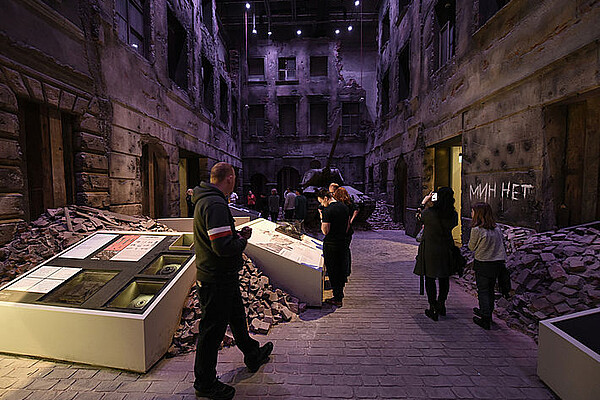
On 23 January 2017, the new permanent exhibition of the Museum of the Second World War was presented in Gdańsk for the first time to a select audience. Although invited, the Minister of Culture Piotr Gliński and his Deputy Jarosław Sellin of the governing party Prawo i Sprawiedlość (Law and Justice Party, abbreviated to PiS) stayed away from the event. However, international experts, historians and the media accepted the museum organisers’ invitation. A few days later, around 3,500 additional visitors were able to view the exhibition during a day-long open house. This can be seen as an attempt by the museum to pre-empt the government’s attempt to prevent it from opening. The struggle over the museum serves as a paradigm for how the PiS government settles accounts with its political predecessors. On the one hand, the party elite around Jarosław Kaczyński is settling the score with their political foe Donald Tusk, who had spearheaded and sponsored the museum. On the other hand, PiS aims to orient the Polish ‘history politics’ along nationalist lines. What this comes down to is the fundamental question of whether history shall be taught and presented as open to interpretation or whether it should be delivered as a national master narrative.
Already soon after the museum directors, Paweł Machcewicz and Piotr M. Majewski, submitted a conceptual outline of plans for the permanent exhibition back in 2008, the museum had come under criticism from right-wing conservative politicians, historians and journalists.[1] The museum presents itself as a war museum, but not a military museum. Its focus is on presenting the brutality and catastrophic impact of the war on civilians. The main intention is to raise visitors’ awareness of the East Central European and Polish experiences. The exhibition presents the First World War as its prologue, while the epilogue spans the period of Europe’s division up until 1989. This means that the Soviet Union plays a central role in all sections of the museum and is situated alongside the politics of Nazism. It is in particular this breadth that helps to highlight the previously neglected history of the countries between the Soviet Union and the German Reich, which have been so memorably described by Timothy Snyder as the ‘bloodlands’.
From the outset, critics complained that the museum was neglecting the Polish perspective. For them it was clear that only an update of the narrative of the Poles as (military) heroes and victims of the war would be worth such an investment. They contended that to universalise wartime experiences would blur the lines between victims and perpetrators, arguing that this perspective ultimately reflected European and German attempts to rewrite Polish history. In essence, an emphasis on the suffering of civilians would turn Germans into victims and relativise German crimes.[2] Already in 2008, during a parliamentary session of the Sejm (parliament), Jarosław Kaczyński proclaimed that the museum should potray the “Holocaust that affected the Poles.” Moreover, to avert damage to Poland, he stressed that it was imperative to distance oneself from the plans for the museum.
While still an opposition politician, Kaczyński maintained his opposition to the museum plans and in June 2013 threatened to "reshape the Museum of the Second World War so that the exhibition in the museum shows the Polish perspective.”[3] For him, the aim should be a new politics of history that would represent Polish dignity and Polish interests. As he saw it, young Poles’ schooling should reflect pride and dignity, not shame as it did now.
The first attempts to prevent the museum’s opening in its planned form were outwardly innocuous. On 23 December 2015, the Polish Ministry of Culture and National Heritage founded the Museum of the Westerplatte and the War of 1939. In April 2016, Minister of Culture Piotr Gliński announced rather unexpectedly that the new institution would be merged with the Museum of the Second World War under this new name. This would allegedly "increase effectiveness in preserving and disseminating national and state traditions" and "streamline" the treasury’s spending.[4] One of the first responses to these plans came from Paweł Adamowicz, the mayor of Gdańsk, who threatened that if the museum were amalgamated and its name and mission statement changed, the city would revoke the building plot, which it had donated free of charge.[5] Gliński swiftly back-pedalled and retained the original name stating legal reasons. However, he did not back away from the merger and its associated aims. He wanted to do away with the museum director, Machcewicz, and change the exhibition of the new museum. The tone of the debate became increasingly harsh and polemical as many new voices joined in from various sides.
In the months that followed, the Ministry of Culture tried out various strategies to damage the museum and to force a merger. The historical and political focus of the institution was repeatedly attacked. Deputy Minister Jarosław Sellin, who had long declared himself an opponent of the museum, gave an interview in April 2016, in which he insisted on the victims-and-heroes narrative. The fate of the Polish people, according to him, should be showcased as clearly as possible:
During the Second World War, no other people resisted two forms of totalitarianism, none experienced such a cruel occupation and none fought on all fronts until the very end of the Second World War. Our part in the Second World War is unique. Consider museums such as Yad Vashem in Jerusalem or the Imperial War Museum in London, where you can find descriptions of Jewish and British experiences of the Second World War.[6]
Yet Sellin’s argument here in no way reflected the focus of the named institutions. While his argument is approximately accurate in relation to Yad Vashem, the Imperial War Museum, for instance, has for a long time presented the events of the Holocaust in a separate area of the exhibition. Sellin’s view of history is also (consciously) abbreviated as the Belarusians or the Ukrainians could claim just as legitimately as he to having been the most significant victims of the war. Thus, PiS revealed the bias in its ‘historical policy’, for drawing equivalences between narratives of victimization and, ultimately, playing them against one another.
On 8 June 2016, a session of the Sejm Committee for Culture and Media (Komisja Kultury i Środków Przekazu) dedicated to the museum went beyond reiterating previous arguments against the plan. As the PiS Member of Parliament Dariusz Piontkowski stated: “It is our right that museums built in Poland should portray the Polish perspective.” The debate revolved around “whether the museum should be a cosmopolitan one in which British and American historians tell us how we Poles should conceive of the Second World War.” As he saw it, elements of the exhibition did not suit the needs of the Polish people. His use of the term cosmopolitan is striking. In the Soviet Union and the state-socialist satellites of Europe, the term was used as an accusation against ideological opponents; in the Stalinist vocabulary of defamation, it became a synonym of ‘imperialistic’ or ‘Jewish’. This also shows how ingrained many PiS politicians, the self-declared reformers of Poland, are in the mindset and rhetoric of the same state-socialist discourses they purport to combat.
Next, the state authority began taking dubious, but very tangible steps amounting to political attacks. Gliński set more traps for the museum directors by sending a committee of auditors to the museum. The museum had been audited in recent years by both the Ministry of Culture and the Supreme Audit Office – in both cases without significant objections. The chair over the new commission just so happened to be the same person who had been in charge of the museum’s ministerial oversight under the last government and had never raised any objections so far. Needless to say, the employees of the museum must have felt they were being intentionally put under pressure and that their day-to-day work was being interfered with shortly before the museum was set to open.
The museum organisers did not remain idle during all the accusations; instead they began a large-scale campaign to defend themselves. In particular, the museum’s director Machcewicz made repeated public appearances in the Polish and international media, provoking significant media coverage.[7] The museum also had the backing of its council and the museum’s international academic advisory board.[8] As a result, the museum received a wave of statements of solidarity from individuals and institutions worldwide. Machcewicz himself took a combative stance and used metaphors of war to describe the intensifying deadlock: “[the Ministry] thought they could do a blitzkrieg, but now we have the Battle of Stalingrad.”[9] In summer of 2016, the museum published the catalogue for the permanent exhibition – months before the exhibition was due to open.[10]
In a symbolically weighty display, some members of the academic advisory board took sides and did not shy away from aiming harsh criticism at the government. As spokesperson for the advisory board, Norman Davies, revered in Poland as an ambassador of Polish history, aired his grievances with Jarosław Kaczyński. According to him, the government’s actions were “Bolshevik” and “paranoid” in style: “The Law and Justice government does not want a bunch of foreign historians to decide what goes on in ‘their’ museum.”[11] Timothy Snyder expressed himself in more diplomatic terms by principally relying on technical arguments:
Unlike other museums devoted to history’s most devastating war, which tend to begin and end with national history, the Gdańsk museum has set out to show the perspectives of societies around the world, through a sprawling collection gathered over the last eight years, and through themes that bring seemingly disparate experiences together. It is hard to think of a more fitting place for such a museum than Poland, whose citizens experienced the worst of the war.[12]
For Snyder, there could be no better way to present Polish history than to embed it within global developments without levelling out differences. In the anticipated closure of the museum, he saw not only a great loss for Poland’s historical consciousness, but in fact a cultural tragedy: “The preemptive liquidation of the museum is nothing less than a violent blow to the world’s cultural heritage.” The German historian Ulrich Herbert voiced his suspicion that radical steps were being taken to prevent the museum from opening altogether. In a radio interview with Deutschlandradio Kultur, he pointed out that in Poland ‘cosmopolitan’ is a loaded term because of its propaganda usage as a code word for ‘Jewish’. Furthermore, as a member of the advisory board, he had felt the clear message that voices from non-Polish historians were not welcome.
The next stage of the debate began when three expert reviews of the permanent exhibition, commissioned by the ministry, were published in June 2016. Once again, the ensuing exchange between government supporters and the museum was biased and intransigent rather than professional. In addition, it seemed that the ministry actually wanted to skirt around an actual debate since it published the reviews only reluctantly and only after this was demanded by the museum directors, the academic advisory board, the mayor of Gdańsk and others. It transpired that two of the authors, Piotr Semka and Jan Żaryn, were well-known critics of the museum. They essentially repeated the accusations from 2008. The third reviewer, Piotr Niwiński, is a professor of history in Gdańsk. He came from the same alma mater, the Catholic University of Lublin, as the museum’s deputy director, Janusz Marszalec, and had worked with the museum several years earlier. His motivations for writing the review remain an open question. Interestingly enough, Niwiński had tried to contact some of the museum’s employees before the publication of his review and tried to win them over to his camp and against Machcewicz.[13]
None of the reviewers had attempted to visit the construction site for the exhibition. Their assessments were based on documents that the museum had provided for this purpose. Niwiński drew up a long list of deficiencies but gave neither a substantial intellectual evaluation of the existing concepts nor concrete suggestions for changes. His core critique, one might summarise, is that the museum was only portraying the overall misfortune of the war rather than highlighting its positive effects as
i.e. the forging of the human nature, the most noble motifs triggered by extreme situations. […] The exhibition is meant to warn against the horror of warfare, but few of its elements set such behaviours as patriotism, civic stance, or devotion to other as examples to be followed.[14]
In contrast, Semka emphatically disagreed with the thematic, and hence ahistorical, approach in the main part of the museum. Among a series of smaller points of criticism, he was scandalised by the marginalisation of the Polish-Ukrainian conflict in Volhynia. Overall, Semka’s critique was, however, more sharp-tongued and shrewd than the other critics. He also spoke against efforts to conceptualise the war as a humanitarian catastrophe. For him, the avoidance of military topics in favour of the fate of the civilian population would crowd out opportunities to convey strength of character or simply pride in victories. As he had done in 2008, he advocated making Polish martyrdom and the glory of the Polish army the focus of the exhibition. Otherwise, he maintained, the danger would be to conflate Poland with the perpetrators of the Holocaust – as exemplified by invocations of the phrase “Polish concentration camps”, now punishable by a prison sentence in Poland. Semka opposed the exhibition’s alleged heroification of victims, which, for him, followed the redefinition of the Holocaust in the 1970s as an exception within the developments of the war. In addition, by universalising wartime experiences, the museum would succeed in giving German victims undue recognition while failing to place the guilt on the Germans. Semka came to the conclusion that the exhibition was not doing justice to what Poland needed and had to be changed in crucial respects. In his eyes, it was vital to preserve the memory of one’s ancestors:
We must remind Europe that we fought Nazism on our own initiative and without cowardly indecisiveness. We are truly and deeply indebted to our grandfathers whose heroism has been forgotten in Europe.[15]
The third reviewer, Jan Żaryn, was also of the opinion that Polish history should be recounted first and foremost. In this vein, he distilled his criticism into talking points. Like the other reviewers, he viewed the Holocaust Memorial Museum and Yad Vashem in Jerusalem as suitable bases for comparison:
Indeed, the general message [should be]: this nation is exceptional living under pressure from both imperialist and totalitarian systems, forced to build everything from scratch time and time again, rooted deeply in the Polish spirit through God and culture, willing to go into far-reaching devotion, composed of individualists who are at the same time deeply attached to family solidarity.[16]
Żaryn had likewise found a formula for a good Polish museum:
In other words, the Museum is for the world, but tells about Poland and the Polish – about who we are today, and why we are what we are: loving freedom, Catholic, patriotic, etc. and most of all – proud of our history.[17]
As was to be expected, the response from the museum organizers in August 2016 could not reconcile any of these programmatic divergences. Apart from a detailed reply on the museum’s website, Machcewicz and Rafał Wnuk, a historian from Lublin and employee of the museum, wrote a detailed opinion piece for the daily newspaper Rzeczpospolita in which they made their position and line of defence clear, but also veered off into polemic. They clearly communicated that if the government prevented the museum from opening, it would be the “most brutal and unprecedented encroachment on the autonomy of cultural institutions in the sphere of publicly negotiated history in free Poland.”[18]They accused all three reviewers of not having taken the submitted documents sufficiently into account and of having come to biased judgments. The authors not only defended the concept of the museum, but perceived the museum as a gauge of the political culture. While they accused the government and minister of culture of having descended into authoritarian behavioural patterns, the prime target of their criticism was Semka: they accused him of waging a political crusade tantamount to the Polish communist authorities’ campaign against Polish Jews in 1968. Back then, ‘cosmopolitans’ had been dispatched to Israel; today Semka was expelling the museum organisers to Brussels. There has to be space for different museums and perspectives on history, they contended, calling Semka mistaken in his claim that universalising the experiences of war meant turning away from liberty and pluralism. He was himself, they believed, demanding a monopoly on the narrative.[19]
When both the museum and the mayor of Gdańsk invited the reviewers and the decision-makers to a public debate about the exhibition, the reviewers refused to participate. For Semka, the debate had taken on telling political dimensions with the museum organisers’ reply. He announced in a right-leaning online platform that while he was ready for an honest debate, he was not prepared for a “media spectacle.”[20]
In the meantime, the ministry tried to do create facts on the ground. It appointed the renowned military historian and former director of the Polish Army Museum, Zbigniew Wawer, as the authorized representative of the minister to oversee the combined museums and hired a law firm to organise the merger. This was first to take place on 1 December 2016. Based on conversations with museum employees, Wawer had asked the board of directors of the Museum of the Second World War, shortly before taking on the new post, to send him photos of himself next to the Dutch royal couple. The PiS government had recently accused him of appearing in too many photographs alongside the former president Bronisław Komorowski. He wanted to rectify this mistake with the help of the museum directors – soon to be, at his instigation, former museum directors.
After a meeting with Machcewicz, Wawer and the other overseers of the transition in top-down ‘historical policy’, however, were persuaded to postpone the merger to 1 February 2017 due to obligations to the building contractors. The museum employees were informed in writing that, due to the merger, their job responsibilities and wages could be subject to change. In late summer, Machcewicz raised an objection against the merger, which was upheld by the administrative court. The Polish commissioner for civil rights upheld the decision, and they achieved a preliminary injunction. The minister, however, did not accept this and made an appeal of his own.
Thus, the period leading up to 1 February 2017 elapsed with frantic preparations for a deadline that could equally constitute the museum’s opening or its closure. On 23 January, the museum invited an audience to the first public presentation of the permanent exhibition, mentioned earlier. In his introductory speech, Machcewicz mentioned that he would likely only retain his post for another eight days. He defended once again the exhibition’s underlying view of history that in his opinion did the utmost justice to the specificity of the Polish experience of the Second World War. He also praised Tusk for founding the museum but never prescribing content to the historians employed in the museum.
Historians, journalists and lenders had a positive first impression of the exhibition, even though it was not yet complete. Worldwide media coverage of the event was also positive.[21] The conservative newspaper Rzeczpospolita explicitly praised the approach of the exhibition organisers:
The [exhibition] is not an overview of acts of war, battles or armament – although these are all present – it is a large-scale [overview of] geopolitics, with Polish people at the very centre. And within this humanity is the most important.[22]
A day later on 24 January, the Supreme Administrative Court declined the case, sending it back to the administrative court in Warsaw. Thus, the merger of the two museums appeared to be finally sealed. However, the showdown concluded with the court of Warsaw putting off the merger once again until 30 January upon the intervention of the city government of Gdańsk. Minister Gliński is now appealing. It still remains an open question how the ministry will handle its politically motivated finding that the museum was apparently 90 million zloty (around 20 million euros) more expensive than had originally been estimated.[23] Presumably, this information will only complicate matters for Machcewicz. There are already targeted insinuations. Sellin claimed that the interior furnishings of one of the hotels belonging to the museum cost 14 million zloty. This amount was, in fact, spent for the museum’s entire finishing and interior decoration, as the museum set straight.
In the end, both sides have scored Pyrrhic victories[24]; neither party will emerge from the situation unblemished. So far, all the government’s attempts to merge the Museum of the Second World War with the Museum of Westerplatte, founded at the end of 2015, have failed. None of the bureaucratic or psychological methods and tricks have been efficacious. On the other hand, despite their many supporters and the open house, the museum organisers have not persuaded anyone from the opposing camp that the permanent exhibition puts Poland in the spotlight. After this debate, the idea of the open society, in which differences are negotiated or tolerated, has also fallen by the wayside. This should have been one of the great strengths of the exhibition. In the words of the former employee of the museum, Anna Muller:
This ambiguity is not, as some critics of the museum claim, a result of conceptual problems, but rather a result of reflection on a war and the role of modern museology that combines emotional and intellectual messages to add nuance and to make us uncomfortable in order to pose questions and prompt reflection. The diversity and the richness […] also tell us something unique about the daily heroism and the martyrology that we Poles hold so dear to our lives.[2]
On 23 March 2017, without much fanfare, the museum will open its doors to the wider public. With this step Machcewicz and his comrades-in-arms create facts on the ground in the conflict over the permanent exhibition and subject their work of the past years to the critical scrutiny of the public. Yet against the backdrop of the ongoing conflict discussed in this article, as well as in view of the still pending court hearings it remains questionable whether the government will reconcile itself with the museum in its current form and leadership.
Translated by Benjamin Robbins
Daniel Logemann: On ‘Polish History’: Disputes over the Museum of the Second World War in Gdańsk. In: Cultures of History Forum (21.03.2017), DOI: 10.25626/0061.
Copyright (c) 2017 by Imre Kertész Kolleg, all rights reserved. This work may be copied and redistributed for non-commercial, educational purposes, if permission is granted by the copyright holders. For permission please contact the editors.
The official website of the Museum of the Second World War in Gdánsk
For more on the politics of history under the PiS government see the entry by Florian Peters in the Cultures of History Forum, 23.10.2016.
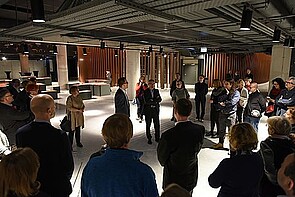
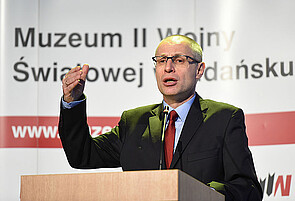
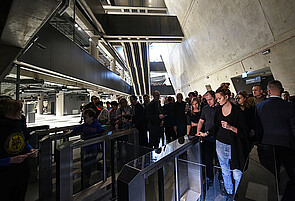
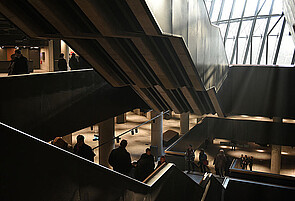
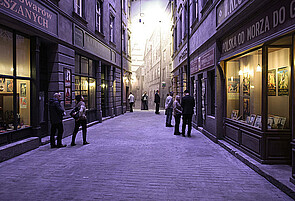
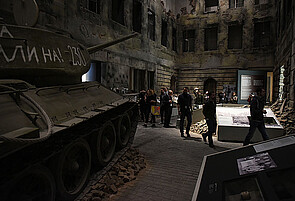
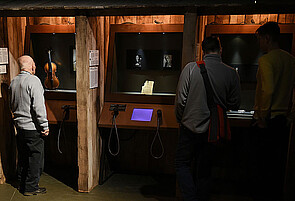
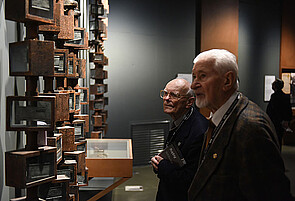
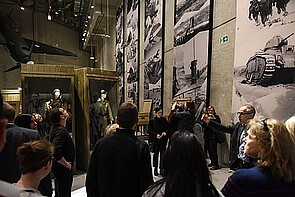
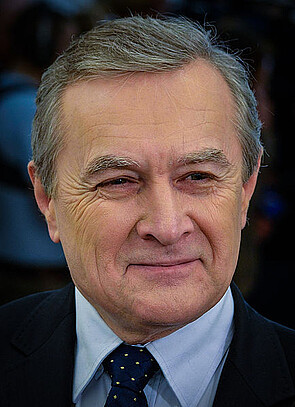
Lidia Zessin-Jurek · 20.04.2023
A History that Connects and Divides: Ukrainian Refugees and Poland in the Face of Russia’s War
Read more
Lidia Zessin-Jurek · 20.12.2021
Trapped in No Man’s Land: Comparing Refugee Crises in the Past and Present
Read more
Interview · 08.03.2021
A Ruling Against Survivors – Aleksandra Gliszczyńska-Grabias about the Trial of Two Polish Holocaust...
Read more
Lidia Zessin-Jurek · 03.09.2019
Hide and Seek with History – Holocaust Teaching at Polish Schools
Read more
Maciej Czerwiński · 11.04.2019
Architecture in the Service of the Nation: The Exhibition ‘Architecture of Independence in Central E...
Read more
Get this article as PDF download (including pictures).